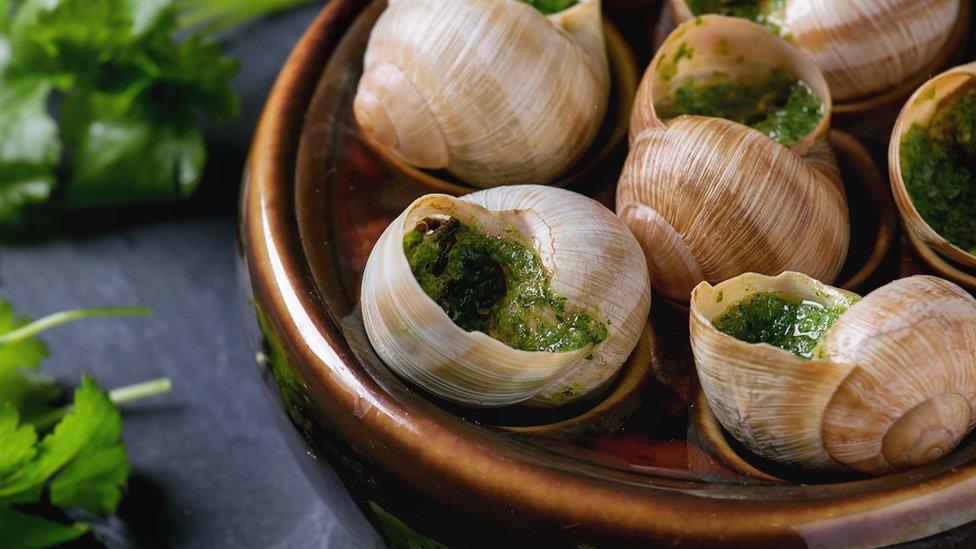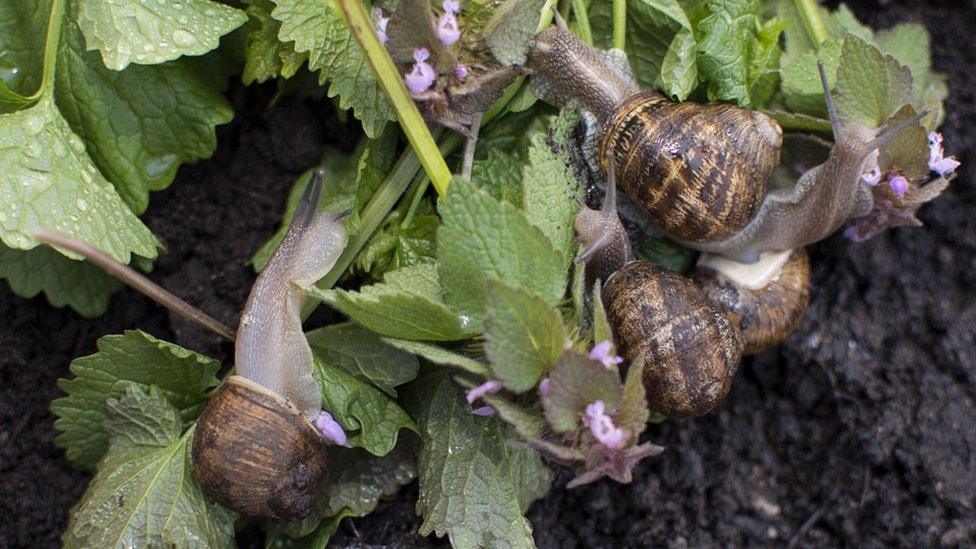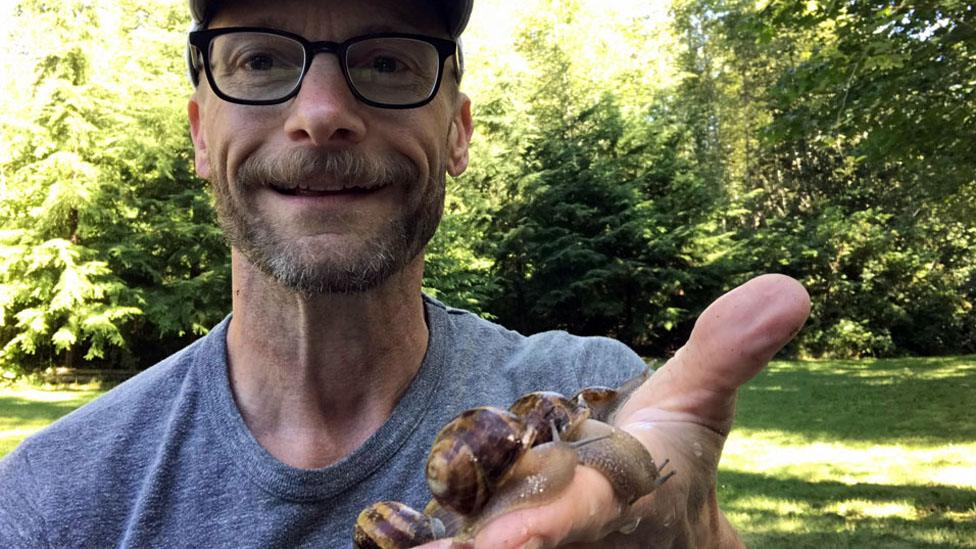Zut alors! The Americans who are farming edible snails
- Published

There are three main species of edible snails, including these - little greys
Taylor Knapp says that he finds snails "fascinating", which is probably for the best, given that he looks after as many as 70,000 of them.
Mr Knapp is the founder and owner of the largest snail farm in the US, Peconic Escargot, based on Long Island, New York - there are just two such farms certified by the US Department of Agriculture (USDA) to rear the molluscs for human consumption.
He hand-delivers fresh snails (escargots in French) to restaurants in New York City, and is struggling to keep up with demand. He has seen annual sales double since first opening for business in 2017.
The 31-year-old, who is also a chef, came up with the idea after tasting fresh snails for the first time while working in Europe. He says he realised that they tasted much nicer than the canned, pre-cooked varieties available in the US.
However, it is illegal for US restaurants or food firms to import fresh snails, whether dead or alive, as they are considered to be a pest or invasive species. And the three main edible species are all native to Europe.

Taylor is aiming to expand is customer base away from New York City
But with trade figures showing that US consumption of snails rose 42% to 300 tonnes in 2018, he saw a business opportunity and decided to launch Peconic so US chefs could get their hands on fresh ones.
But if you cannot import snails into the US, where was he to get his breeding stock from? Thankfully, he was able to buy some petit gris or little grey snails (one of the best species for eating) from a supplier in California.
The descendants of these snails had set up home in California since 1850, after they were brought over to the US by a European immigrant. He or she had seemingly been able to sneak them past the US Customs service, which had been up and running since 1789.
To launch Peconic, Taylor and his business partner raised $30,000 (£23,000) from a crowd-funding scheme and other investors. He then worked closely with the USDA to get regulatory approval.
This includes making sure the greenhouse where his snails live is snail-proof, and that they cannot escape, however slowly. This includes an airlock door, all drain holes being grated, and the greenhouse being surrounded by gravel which is regularly sprayed with snail repellent. It is Alcatraz for snails.

Escargots are typically served in garlic and parsley butter
"It's a bit of an overkill," says Ric Brewer who owners the other USDA-approved snail farm - Little Gray Farms Escargotiere - in Washington state. He wonders whether understaffing at the USDA means that they have put in excessive rules.
"The USDA is stretched for resources, they are stretched for inspectors," says the heliculturalist (someone who breeds and raises snails for eating).
Ric's farm opened in 2011, and is home to up to 50,000 snails; as the name of his business suggests, he also specialises in the petit gris species.
"As an animal, they have been around for more than 500 million years, and have a complicated life cycle for such a seemingly primitive creature," he says. "As a culinary source, they are a very adaptable ingredient, and have a low environmental impact as livestock.
"They are cooked just as you would clams, crabs or lobsters - put into a pot of boiling water, though I do hibernate them first in a refrigerator. They most likely don't even know what's happened."

The snails at Peconic Escargot get a luxurious diet that includes assorted herbs, lettuce and dandelions
Rick and Taylor both sell their snails raw, which means that they have to be kept chilled at all times, and have a shelf-life of just one week. This is a world away from canned snails, which can last for years if the tin is unopened.
For their troubles, they can charge more twice as much for their snails.
Chef Ryan Angulo sells Peconic snails at Brooklyn's French Louie restaurant. "They have such a different flavour and texture [compared with the canned alternative]," he says.
"They are about the price of a local oyster. In the same vein, you should treat them as you would a fresh [cooked] oyster - cooked gently with ingredients that highlight its flavour."

Ric Brewer looks after up to 50,000 snails
Taylor says that he is aiming to expand sales beyond New York, and is looking at partnering with a seafood distributor so that his snails can stay nice and cold during transportation. Currently he sells up to 27kg (60lb) of snail meat a week.
"We have saturated the New York market," he says. "We need to be breaking out to some other east coast cities like Boston and Philadelphia."
However, as exporting is currently out of the question, as the USDA doesn't permit it, it means the two producers will have to wait before then can try to make a dent in the global market, with wholesale sales worth some $117m a year.
"Snails are fascinating, but I don't find them to be loveable," says Taylor. "I enjoy eating them, so to say that I love them would be a little much."